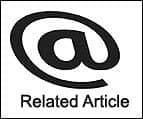By understanding our unique motivators, we can reduce frustration and better achieve desired results. Emotional intelligence is just one component of the assessment process used in understanding yourself and leveraging your leadership assets.

|
| Danita Bye is president of Net-Five, Minneapolis, a consulting business that specializes in practice management with particular emphasis on private dispensing offices in the hearing care field. |
Lao Tse, the 6th-century Chinese philosopher and reputed author of the Tao Te Ching, said:
“He who knows others is learned. He who knows himself is wise.”
Successful leaders through the ages have professed that identifying and understanding one’s own personal strengths and weaknesses is a key strategy for improving personal and professional performance. The focus of this lead article in a series of three is on how practice managers can discover and leverage their leadership competencies through a process of professional self-awareness and development called Identity Clarity.
Future articles will address how Identity Clarity can help practice managers improve team performance and how those dispensing professionals who understand and improve their own Identity Clarity can better communicate with and serve patients.
I’m an Excellent Audiologist, but a Mediocre (at Best) Manager
Is managing your practice and your staff your biggest headache? If yes, you’re not alone. Harris Interactive, the originators of the Harris Poll, recently polled 23,000 employees. Their startling findings reveal that leadership is challenging regardless of the industry and profession:
- Only 20% of employees were enthusiastic about their team and company goals.
- Only 50% were satisfied with the work they accomplished during the week.
- Only 15% felt that their companies fully enabled them to complete key goals.
- Only 15% said they worked in a high-trust environment.
- Only 17% felt their organizations foster open communication that respects differing opinions and results in new and better ideas.1
If surveyed, what would your staff say about your leadership? Building a practice in a highly competitive, rapidly changing environment is hard work requiring technical competence and intelligence. Yet, these qualities alone do not lead to success. We are in a field where there is high demand for qualified dispensing professionals. Quite simply, there are fewer dispensing professionals than there are available jobs.
If you lose your top performers, how do you replace them? If the audiologists or hearing instrument specialists employed by you are underperforming and hard to replace, what do you do? Given both situations, it’s imperative that today’s practice managers be effective leaders who inspire others to do their best work and to stay loyal when other jobs beckon.
For example, Mark, a very bright, ambitious audiologist and practice manager, threw up his hands in utter frustration. “No matter what I say or do,” he complained, “I can’t seem to motivate my staff beyond the same old performance. I don’t understand why they lack initiative.” Mark was recognizing that the “same old” was translating into missed opportunities, declining margins, lost revenue, and fewer referrals.
Like Mark, practice leaders often mistakenly believe their staffs are the problem. They can’t understand why their staffs reject good ideas, do not solve problems innovatively, and quickly resort to excuse-making when confronted with facts related to poor job performance. In short, the managers blame their lack of success on the people they manage.
After objectively assessing numerous dispensing teams, we find that it’s the practice leader’s challenge to strengthen the management systems and processes, as well as to develop the leadership and management acumen to deal effectively with the “hand they’ve been dealt”: their teams. With the shortage of trained dispensing professionals, practice managers need to look deep within themselves to learn how to inspire, motivate, and retain their employees.
The Role of Emotional Intelligence in Management
Think of someone you know who inspires performance and loyalty in his or her professional dispensing staff. Can you pinpoint their secret? Why do their teams seem excited about where they work? Why do they stay with the firm even though other practices may offer them more money? Why do they go the extra mile to improve their skills?
Although management systems and process, business acumen, and technical competence create the framework for a successful dispensing practice, the authors of Primal Leadership: Realizing the Power of Emotional Intelligence offer this explanation:
“When we try to explain why they are so effective, we speak of strategy, vision, or powerful ideas. But, the reality is much more primal: Great leadership works through emotions. Objectives, strategies, and tactics can be brilliant. However, if a leader doesn’t engage the appropriate emotional IQ, the initiative is more likely to fail. If leaders fail in this primal task of driving emotions in the right direction, nothing they do will work as well as it could or should.”2
The authors of of this book assert that managers have traditionally seen workplace emotions as “noise cluttering the rational operation of the organizations.”2 However, marginalizing emotions as a bothersome natural byproduct of human toil is both archaic and wrongheaded. Instead, organizations need to realize the benefits of “primal leadership,” say the authors, by cultivating leaders who can generate and channel those emotions that allow people to flourish at work.
Based on the extensive research done in this field, one concludes that a powerful step in learning how to inspire and motivate one’s team is to acknowledge that the answer may lie with us as leaders and our Emotional Intelligence (EI)—a critical component of the overall management concept of Identity Clarity.
You may be asking, “What is Emotional Intelligence?” Other readers who are familiar with the term are wondering how EI relates to growing a dispensing practice. EI is the ability to relate to ourselves and others productively. A leader with high EI can create an emotional climate that fosters creative innovations, all-out performance, loyal employees, and most importantly, patient relationships. EI emerges as a strong predictor of which practices will be most successful.
Do Leaders Need To Develop EI?
There are four dimensions of emotional intelligence:
- Self-awareness
- Self-management
- Social awareness
- Relationship awareness
EI leadership is built on a foundation of self-awareness. As Goleman et al2 contend, “Without recognizing our own emotions, we will be poor at managing them, and less able to understand them in others.”
Lack of awareness negatively impacts a practice leader’s ability to see all the available solutions to a problem. More importantly, it curtails the ability to sense how their dispensing professionals and patients see a situation and to respond appropriately and constructively to help everyone accomplish the end goal. The fact is that without self-awareness of his or her emotions, a leader stands little chance of controlling them. The professional day-to-day relationship with staff members will suffer without this awareness and control.
Although not from this industry, the following example can shed some light on the impact of lack of self-awareness. Curtis, who had a strong engineering background, was charged with leading the growth initiative for an engineering firm. During our first conversation, Curtis gave me very clear directions. He wanted to increase revenues and margins; however, I was to focus only on his staff. I was not to discuss his leadership or management acumen. Even after repeated attempts to discuss Identity Clarity, Curtis resisted. Even when his boss expressed mounting concerns about his lack of leadership skills, Curtis boldly proclaimed, “I’m not the problem. It’s my staff—they need help.” It’s not surprising that the team’s new-business development efforts languished, and 3 months later he was fired from a very promising job.
With accurate data, leaders can learn how to leverage their strengths and make decisions about how to ensure their weaknesses don’t negatively impact them and their performance.
Isn’t EI an Inherent Trait? Can it Really be Developed?
Yes, EI can be developed. While some people are “born” with a high level of EI, others have to work to attain that higher level. Leadership development includes the following steps:
- Clarity about EI competencies
- Knowledge acquisition in key areas
- Coaching, reinforcement, and application training
- Accountability by supportive peers and mentors
There are numerous objective assessments that measure the various dimensions of EI and create the clarity needed for both personal and professional growth. The process we use assesses leadership competencies, behaviors, and motivators, providing a valid objective assessment of the four components of emotional intelligence, a key component of the Identity Clarity process. While the following descriptions detail the actual program we use, they are also designed to provide insight into the components necessary for assessing and modifying leadership in a professional practice.

|
| Danita Bye is president of Net-Five, Minneapolis, a consulting business that specializes in practice management with particular emphasis on private dispensing offices in the hearing care field. |
Three Assessment Tools: The What, the How, and the Why
1. Leadership and competencies. What are your personal leadership talents and skills? This dimension goes beyond your ability to read an audiogram or give a performance review. There are numerous assessment tools that one can use to gain an understanding of one’s leadership aptitude.
One such tool, the Personal Talent Skills Inventory™, assesses a leader’s cognitive structure and mathematically quantifies the core dimensions of how a person thinks. The outcome provides a picture of the individual’s leadership capacities, such as accountability for others, ability to develop others, emotional control, and other issues related to EI that are imperative to effective leadership. The inventory measures and ranks 23 key personal skills, defining major strengths relative to how one interacts with both the external world (e.g., people, tasks, and systems), as well as how one relates to one’s internal world (e.g., sense of self, role awareness, and self-direction).
Another professional development tool for leaders that has gained tremendous momentum is a 360-Degree feedback process. These tools measure a leader’s competencies in eight dimensions: communication, leadership, adaptability, relationships, task management, production, development of others, and personal development. Feedback is objectively solicited directly from three different rating groups: their boss(es), their direct reports, and their peers. The advantage of a 360-Degree feedback process is that it can be an ongoing process that can be utilized at key intervals in order to monitor performance. It’s vital to ensure that this process is not a stand-alone event; instead, it should be used as a developmental, coaching, and follow-up plan to support growth objectives.
For example, Janet led a successful, well-respected practice with two other dispensing professionals. However, with two children graduating from high school, and looming college bills, as well as a desire to create a larger retirement portfolio, Janet was determined to grow the practice. But her staff was content with the status quo. They saw no reason to change their behavior, activity, or results.
Frustrated, Janet called us searching for answers. Through the assessment and coaching process, Janet realized that she possessed strong talents and skills in leading others, objective listening, and customer focus. However, she had some practical leadership gaps. She was weak in taking accountability for others as well as in developing others. Based on her goals and on this data, we charted a path to help her develop the mindset needed to create a results-based practice.
The most effective leaders are those who understand themselves—both their strengths and their weaknesses—so they develop strategies to meet the demands of their roles.
2. Leadership and behavioral style. How do you communicate with your professional staff members? With their patients? With other employees?
In 1928, Dr. William Marston, having earned a doctorate from Harvard University, published The Emotions of Normal People.3 In it, he described a theory that underlies numerous assessment tools related to his view that people behave along two axes (Figure 1). Their reactions tend to be either passive or active, depending on whether the individual views the environment as antagonistic or encouraging. By placing these axes at right angles, a 2-by-2 quadrant is formed, with each delineating a behavioral pattern: Dominance (D), Inducement (I), Steadiness (S), and Compliance (C)—collectively known as DISC.
A study in observable behaviors and emotions, DISC helps analyze how we act, without gauging intelligence, personality, values, beliefs, skills, knowledge, or education. Highlighted as an observable, universal, neutral, and silent language, DISC analyzes how different individuals (including business managers) approach problems and people.4 It also examines an individual’s pace and procedures for tackling difficult situations. This “methodology of language” serves several purposes, including the ability to build successful teams, increased commitment, and cooperation from others.
As mentioned, DISC identifies four behavioral styles, each with its own focus and characteristics:
- Dominance (D). Extroverted, task-oriented individuals who are often direct, ambitious, bold, innovative, demanding, and love challenges.
- Inducement or influence (I). Extroverted, people-oriented individuals who are often direct, optimistic, social, enthusiastic, negotiators, creative, but can be disorganized.
- Steadiness (S). Introverted, people-oriented individuals who are often indirect, unemotional, tolerant, loyal, patient, dependable, and hard-working, but tend to be resistant to change.
- Compliance (C). Introverted, task-oriented individuals who are indirect, perfectionistic, objective thinkers, pay attention to details, but may be too critical and defensive at times.
Susan was a “High D” practice manager: focused, direct, aggressive, and bottom-line oriented. Her employee, Ron, on the other hand, took a Steadiness approach, believing it important to really get to know patients and connect on an emotional level before discussing uncomfortable financial issues.
Ron, tiring of Susan’s business-only, bottom-line orientation, decided that he’d pursue other options and submitted his resignation. Of course, a resignation from the largest revenue producer in the practice was Susan’s wake-up call. She realized that her strengths had become too overbearing and that, in order to retain Ron, she’d have to alter her communication style. Instead of directing Ron with a list of “to-dos” to be checked off by the end of each workday, Susan needed to slow down and build a better relationship with Ron.
Knowing the strengths of your preferred behavioral style helps you, as the leader, flex in order to accomplish your desired goals. Acknowledging the weaknesses of your communication preferences helps you develop a support system, ensuring that your “shadow side” doesn’t sabotage your leadership strengths.
|
Workplace Motivator |
Seeks |
Sample Passions |
|
Theoretical |
Knowledge and information |
Solving problems using theory |
|
Utilitarian |
Investment and security |
Achieving return-on-investment |
|
Aesthetic |
Beauty and harmony |
Being creative, unique experiences |
|
Social |
Helping others grow and develop |
Supporting worthy causes |
|
Leadership |
Personal power and influence |
Leading others, attaining power |
|
Traditional |
Rules and order |
Understanding a meaning of life |
|
Table 1. Edward Spranger developed a system of six specific attitudes prevailing across the world.5,6 |
||
3. Leadership and workplace motivators. Why do you do what you do? What are the motivations? A person’s motivations are based on internal, often unconscious, values. This is one of the reasons why we are “surprised” by someone’s behavior. Edward Spranger,5 a noted philosopher and psychologist, conducted one of the earliest modern studies on values. Spranger revealed six specific attitudes prevailing across the world: 1) Theoretical; 2) Utilitarian; 3) Aesthetic; 4) Social; 5) Leadership; 6) Traditional. These are described more fully in Table 1. Like Marston’s model, these six values form the basis for a whole range of assessment tools used in multiple industries and across numerous job functions.
Beth envisioned herself and her clinic as community leaders, spearheading a “Better Hearing/Better Living” campaign throughout the medical community. Having a dominant Leadership motivation, she hired a stellar staff of audiologists to help launch her project.
However, Beth quickly became frustrated with Dale, who seemed to go out of his way to help patients. While normally a good thing, in Dale’s case, he spent a majority of his time with just a few patients. As Dale’s revenue remained flat, Beth’s frustration increased.
Beth was stunned to review Dale’s Workplace Motivator™ assessment results. As opposed to Beth’s Leadership drive, Dale valued social interaction, being a “helper,” above all else. With this new understanding, Beth reframed the purpose of Dale’s daily activity. Dale’s new top priority was not only to help his patient but also to help his fellow employees by ensuring that certain community activities were accomplished and that revenue objectives were hit consistently.
EI Knowledge Is Power
By understanding our unique motivators, we can reduce our frustration and better achieve our desired results. Will investing the time create a stronger practice? EI is just one component of the assessment process used in understanding yourself and leveraging your leadership assets (Identity Clarity). The results of this process are designed to reveal your hidden strengths. The coaching process that follows maximizes and leverages those strengths, giving you the knowledge to create a next-step action plan and ensure accountability for success throughout your practice.

|
| “Let Your Team Have It…Their Way,” by Danita Bye. February 2005 HR.
“Coaching for Entrepreneurs,” by Danita Bye. November 2004 HR. “Effective Employee Supervision,” by Kelly Riggs. April 2006 HR. |
Leaders who invest the time and energy to work through this process will create stronger practices. They know how to leverage their leadership talents, skills, behaviors, and motivators to create an emotional climate that fosters creative problem- solving and quantum-leap performance. As Steven R. Covey says, “All leadership development is character development.”
References
- Covey SR. The 8th Habit. New York: Free Press; 2004.
- Goleman D, McKee A, Boyatis RE. Primal Leadership: Realizing the Power of Emotional Intelligence. Boston: Harvard Business School Press; 2002.
- Marston WM. The Emotions of Normal People. New York: Harcourt Brace; 1928.
- Bonsteetter BJ, Suiteer JI, Widrick RJ. The Universal Language™ DISC, A Reference Manual. 4th ed. Roswell, Ga: Target Training Intl;1993.
- Spranger E. Types of Men. New York: Johnson Reprint Co; 1966.
- Ferm J. The PIAV MBA™: The Secret Language of Values Training Course. New York: Coeur Coaching LLC; 2005:16.
Correspondence can be addressed to HR or Danita Bye at ; Web site: www.Net-Five.com; Phone: (800)256-2799.





